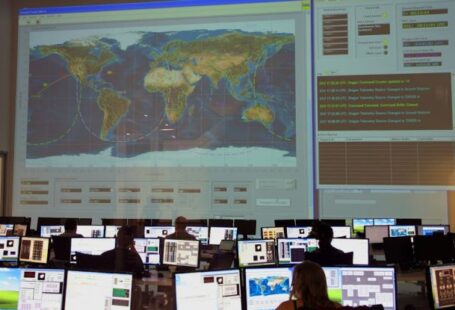When it comes to navigating the world around us, maps and charts are essential tools that help us understand and visualize information. While both serve as visual representations of data, there are distinct differences between a map and a chart. Understanding these variances can help us utilize each tool effectively for different purposes.
Visual Representation of Spatial Information: Maps
Maps are graphical representations of geographical information, providing a visual depiction of spatial relationships between various elements. They typically showcase physical features such as landforms, bodies of water, and man-made structures. Maps are commonly used for navigation, planning, and understanding the layout of a specific area.
Types of Maps
There are several types of maps, each serving a unique purpose. Topographic maps, for example, display elevation through contour lines, making them ideal for hikers and outdoor enthusiasts. Political maps, on the other hand, highlight boundaries between countries, states, or cities. Thematic maps focus on specific themes such as population density, climate patterns, or natural resources distribution.
Map Components
Maps consist of key components that facilitate understanding and interpretation. These include a legend or key, which explains symbols and colors used on the map, a scale bar to indicate distances accurately, and a compass rose to show cardinal directions. Additionally, maps often include labels, grid lines, and insets to provide additional context and information.
Charts: Visual Representation of Data
Charts, on the other hand, are graphical representations of data or information, designed to illustrate trends, relationships, and comparisons. Unlike maps, charts do not necessarily depict spatial information but rather focus on presenting numerical or categorical data in a visual format. Charts are commonly used in business, research, and academic settings to communicate complex information concisely.
Types of Charts
There are various types of charts available, each suitable for different data visualization needs. Line charts are ideal for showing trends over time, while bar charts compare categories or groups. Pie charts represent proportions or percentages of a whole, and scatter plots display relationships between variables. Choosing the right type of chart depends on the nature of the data and the message you want to convey.
Chart Components
Similar to maps, charts consist of components that enhance understanding and interpretation. A title or heading provides context for the information presented, while axes define the scale and units of measurement. Labels, legends, and data points help readers interpret the chart accurately. Additionally, colors, patterns, and shapes are used to differentiate data categories and highlight key points.
Choosing the Right Tool for the Job
While maps and charts serve distinct purposes, there may be instances where their functionalities overlap. When deciding between a map and a chart, consider the type of information you want to convey and the audience you are targeting. If you need to showcase spatial relationships or navigate a physical environment, a map would be more appropriate. On the other hand, if your goal is to present data trends, comparisons, or relationships, a chart would be the better choice.
In conclusion, maps and charts are invaluable tools for visualizing information in different contexts. Understanding the differences between these two forms of visual representation can help you select the most suitable tool for your specific needs. Whether you are exploring new terrain or analyzing data trends, maps and charts offer unique ways to communicate complex information effectively.





